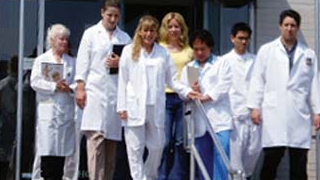Acupuncture is a modality of Oriental medicine and has been utilized for over 5,000 years by various Eastern cultures. Similar to other holistic therapies, it encompasses the principles of Traditional Chinese Medicine (TCM) and focuses on treating the body as a whole, taking into consideration the physical mental and emotional factors. Acupuncturists are taught to touch, listen, and observe the patient carefully, allowing the practitioner to determine and treat the root cause of the problem, rather than just its symptoms.
An Acupuncture treatment consists of the Acupuncturist using various methods in diagnosing the problem. Subsequently, the Acupuncturist will devise a treatment plan consisting primarily of “needling”. However the plan may also incorporate a variety of TCM modalities into the patient’s treatment including Chinese nutrition, herbology, Asian Bodywork Therapy, yoga, t’ai chi and more. “Needling” is the insertion of thin sterile disposable acupuncture needles into specific points in the patient’s body and stimulating them for the purpose of restoring harmony to the patient’s flow of energy, or qi.
Acupuncture has been found to treat a variety of ailments and as a result, is steadily being integrated into Western medicine. Currently, Acupuncture is utilized by all branches of the U.S. Military for the treatment of various ailments including chronic pain and Post-Traumatic Stress Disorder (PTSD). Additionally approximately 30% of Western physicians refer their patients to Holistic therapies today and in particular, Acupuncture. The growing popularity of Acupuncture treatment is creating a variety of gainful employment opportunities for trained Acupuncturists in the United States.
Many individuals decide to study Acupuncture due to personal benefits they have received from an Acupuncture treatment. Holistic medicine, and in particular Acupuncture, is a steadily growing industry that is in demand for trained Acupuncturists. Individuals interested in pursuing Acupuncture are advised to find an ACAOM accredited Acupuncture school that has a curriculum consisting of Acupuncture treatment techniques as well as Traditional Chinese Medicine principles.
New York College of Health Professions is an exemplary Acupuncture School that is ACAOM accredited, allows for working students to attend school full-time or part-time, day, evening or on weekends, and has 4 convenient locations on Long Island and in New York City. Their Graduate School of Oriental Medicine offers a 145-credit, nine-trimester Acupuncture Program. Graduates that successfully complete this program earn a Bachelor of Professional Studies in Health Science/ Master of Science – Acupuncture degree.
An Acupuncture treatment consists of the Acupuncturist using various methods in diagnosing the problem. Subsequently, the Acupuncturist will devise a treatment plan consisting primarily of “needling”. However the plan may also incorporate a variety of TCM modalities into the patient’s treatment including Chinese nutrition, herbology, Asian Bodywork Therapy, yoga, t’ai chi and more. “Needling” is the insertion of thin sterile disposable acupuncture needles into specific points in the patient’s body and stimulating them for the purpose of restoring harmony to the patient’s flow of energy, or qi.
Acupuncture has been found to treat a variety of ailments and as a result, is steadily being integrated into Western medicine. Currently, Acupuncture is utilized by all branches of the U.S. Military for the treatment of various ailments including chronic pain and Post-Traumatic Stress Disorder (PTSD). Additionally approximately 30% of Western physicians refer their patients to Holistic therapies today and in particular, Acupuncture. The growing popularity of Acupuncture treatment is creating a variety of gainful employment opportunities for trained Acupuncturists in the United States.
Many individuals decide to study Acupuncture due to personal benefits they have received from an Acupuncture treatment. Holistic medicine, and in particular Acupuncture, is a steadily growing industry that is in demand for trained Acupuncturists. Individuals interested in pursuing Acupuncture are advised to find an ACAOM accredited Acupuncture school that has a curriculum consisting of Acupuncture treatment techniques as well as Traditional Chinese Medicine principles.
New York College of Health Professions is an exemplary Acupuncture School that is ACAOM accredited, allows for working students to attend school full-time or part-time, day, evening or on weekends, and has 4 convenient locations on Long Island and in New York City. Their Graduate School of Oriental Medicine offers a 145-credit, nine-trimester Acupuncture Program. Graduates that successfully complete this program earn a Bachelor of Professional Studies in Health Science/ Master of Science – Acupuncture degree.


